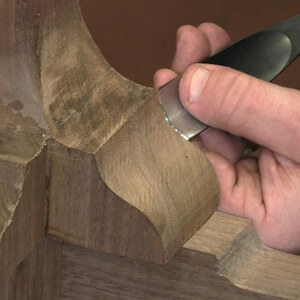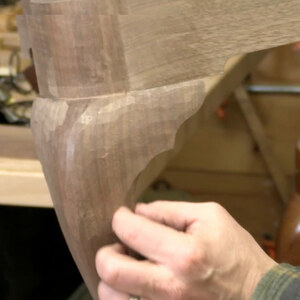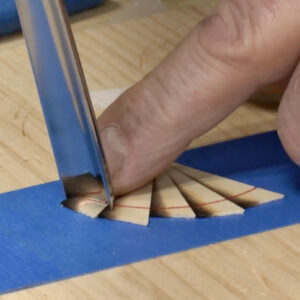A Short History of Furniture Periods
Throughout history, furniture design pays tribute to its patrons and popular designers
Throughout history, trends in furniture design have evolved alongside societies, the materials they had access to, and advancements in technology. Today’s historian thus has a variety of characteristics to apply to furniture to determine the date in which it was made.
• Categorized by species: Furniture periods are sometimes defined by the prevailing species of the time
• Categorized by century: Many furniture periods span multiple centuries, but general design themes can be attributed defined 100-year spans
Age of Oak
Furniture made during the reigns of the British Tudor monarchs (Henry VIII, Elizabeth I, et al.) is commonly referred to as belonging to the Age of Oak, since oak was the predominant species used for most pieces. As with all period styles, there is no clear beginning and end, but over a period of 160 years from around 1500 broad characteristics can be seen.
Age of Oak furniture retains much of the previous Gothic period, especially in the amount of carving used to decorate panels and framing members, although the use of pierced carving was less popular. In general these are massive, sturdy pieces, such as huge four-poster beds, long rectangular tables with bulbous turned legs connected by stout stretchers, benches for general use, and joined (as opposed to turned) chairs made for important people. The totally enclosed, frame-and-panel chair typical of the medieval period slowly gave way to a lighter version with turned or carved legs, but both are known as wainscot chairs, implying either that the oak used was imported from the Baltic or that the construction method was frame-and-paneling similar to the wall paneling of the period.
Joined, frame-and-panel chests, in distinction to the solid-board chests of previous centuries, reached their peak in this period, and became the inspiration for various other developments such as settles, dressers, and cupboards. This period is also known as the English Renaissance, since much of its inspiration came from a renewed interest in classical forms brought to England by craftsmen from Spain, Italy, and the Netherlands at the invitation of Henry VIII.
Italian-inspired carving in the form of acanthus leafage, fruit and floral carving, bas-relief figure carving, and armorial motifs was as widespread as the earlier linenfold and parchemin carved panels. The honest, four-square, if massive quality of this period was in part the inspiration for the Arts and Crafts style that appeared towards the end of the
19th century.
Age of Walnut
The term “Age of Walnut” is not so much descriptive of any particular style of furniture as it is a means of dating furniture — roughly from 1600 to 1730. One reason for the gradual introduction of walnut may have been improvements in sawing. While planks could only with difficulty be sawn thinner than an inch, it was natural to construct furniture using them as such, and to employ carving as the easiest form of decoration. But as people learned to cut thinner slices of material, it became possible to use such thin slices — especially when of wood remarkable for its contrasting color or unusual figure — as an alternative form of decoration. And, in fact, it was the gradual increase of this new technique (using walnut inlaid or veneered upon oak) that accounts in large part for the decrease of carved surfaces as the chief characteristic of fancy furniture.
Age of Mahogany and Satinwood
The Age of Walnut gradually gave way to a period in which mahogany was the predominant species used. The Age of Mahogany dominated much of the middle part of the 18th century. The beginning of this period saw a sudden simplification of style into a less ornamented and more severely elegant esthetic. Emphasis was henceforth on simple, flowing lines. Later examples became more heavily carved, fretted, and typically replete with what is perhaps the most characteristic element of this whole period: the cabriole leg. This was at first plain and finished with a simple turned pad foot, and later developed into a much carved element, complete with ball-and-claw, hairy paw, or lion’s feet.
The latter part of the century is sometimes referred to as the Age of Satinwood, although mahogany continued to be very popular. It was dominated by a less curvilinear, more severe, classically inspired style introduced by the architects known as the Adelphi — the trademark adopted by the four Adams brothers.
17th Century
The early Jacobean period, starting around 1603, when James I came to the throne, represents a gradual change from Age of Oak Elizabethan exuberance to a less ornamented, quieter style. Table legs, for example became straighter and lost the large “melon” turnings that were typical of earlier pieces. Spiral-turned legs are also typical of this period — something that remained popular in gateleg tables for centuries. Overall profiles became lower and more rectangular. Later Jacobean furniture (during the time of Cromwell the Protector) was very stern, square, and frugal, as befitted a retreat into a time of righteous severity. But with the return of the monarchy under Charles II, Carolean furniture once again became much more ornate, characterized by intricate carved stretchers and colorful upholstery decorated with tasseled fringes.
During the early Colonial period of the United States (approximately 1620–1750), much furniture arrived with the first immigrants, including most famously the Pilgrims. They brought with them, and then made, pieces typical of the Jacobean and Carolean periods in Britain: late Renaissance-style pieces that were still largely representative of the so-called Age of Oak. These were in general sturdy pieces heavily carved, many with cup-turned legs and bun feet. In the harsher environment of the Colonies these pieces were often simpler representatives of the parent styles, as befitted a more straightforward and utilitarian life.
Other influences were also present during the Pilgrim century, most notably Dutch and French in the Northeast, and Spanish in the Southwest. Although recognizably different from their British-inspired counterparts, Dutch pieces are essentially in the same tradition, whereas the different climate and different species of lumber available to Spanish colonists produced — and continue to produce — a distinct style known as Mission or Southwestern.
The earliest attributable American-made piece of furniture is a chest made by Nicholas Disbrowe around 1660. Uncompromisingly rectangular, its distinctively carved frame-and-panel construction, although very reminiscent of earlier British Age of Oak pieces, is already recognizable as a distinct American style. Many other early Colonial era pieces, such as wainscot chairs and heavy joint-tables, are similarly in the Age of Oak tradition.
By the end of the period, the influence of the British William and Mary style was being felt. Compared to earlier Jacobean and Carolean pieces this was a lighter, more elegant style. Inverted, cup-turned legs, bun feet, and serpentine stretchers make this style very identifiable, especially in comparison with the Queen Anne style that followed, marking the beginning of the 18th century.
The 18th Century
To understand the term “18th-century furniture,” it will be most instructive to refer to the following terms, all of which may also be defined as 18th century: William and Mary, Queen Anne, Georgian, Chippendale, Hepplewhite, Sheraton, Adam, Regency, Federal, and the French periods of the several Louis, Directoire, and Empire.
In essence, however, all 18th-century furniture, whether American, British, or French — and there is much connection between the first two and a great deal of dependence of these two on the latter — shares an informed and purposely trained construction that is distinct from much subsequent furniture. There is both less of the unrestrained commercialism typical of the mass-produced furniture of the 19th century with its endless “Revival” styles, and less of the often self-indulgent estheticism of so-called studio or art furniture typical of the 20th century.
Eighteenth-century furniture may be commonly thought of as representing the golden age of the cabinetmaker, trained in the “Arts and Mysteries of the Craft,” which manifests as highly finished, sophisticated designs, albeit stylistically often as widely divergent from one another as is a cabriole leg from a Federal taper.
The 19th Century
The 19th century is marked by the Industrial Revolution, which caused profound changes in society. With increasing working populations in cities, with the rise of a new class of wealthy (but not necessarily informed) furniture buyers, together with the arrival of mass-production and the consequent demise of the individual craftsman-designer, the gradual progression of furniture styles that had characterized previous centuries was replaced by a riot of often poorly imitated styles.
Since mass-production of parts became easy and inexpensive, it was a simple matter to graft more or less historically correct ornaments onto all sorts of furniture, thereby making possible a continual stream of “revival” styles to whet the public’s appetite. The result was a century of furniture whose commonest denominator was excessive ornament in the form of applied metal or wood carvings, inlays, or stencils, marketed variously under the guise of so-called Rococo Revival, Gothic Revival, Renaissance and Italian Revivals, Greek, Roman, and Egyptian Revivals, and even various Eastern Revivals.
20th Century
The term”20th Century” is only very generally useful, since it includes so many distinct styles more usefully understood on their own. But it can be taken to refer to anything produced after the 19th century, and by and large as representing relatively contemporary furniture as opposed to period furniture.
Styles such as Art Nouveau and Art Deco, while remaining useful inspirations for subsequent 20th-century styles, are quite distinct from most Modern and Post-modern furniture, and none of the above can be considered as quintessentially representative of the20th century.
The fact remains, however, that because of the greater availability of a wider array of materials than ever before, and because of an ever-expanding awareness of historical and cross-cultural esthetics, 20th-century furniture is perhaps more diverse, in terms of style, than the entire three centuries that preceded it.
Graham Blackburn is a furniture maker, author, and illustrator, and publisher of Blackburn Books (www.blackburnbooks.com) in Bearsville, N.Y.
Fine Woodworking Recommended Products

Drafting Tools


Compass





















Log in or create an account to post a comment.
Sign up Log in